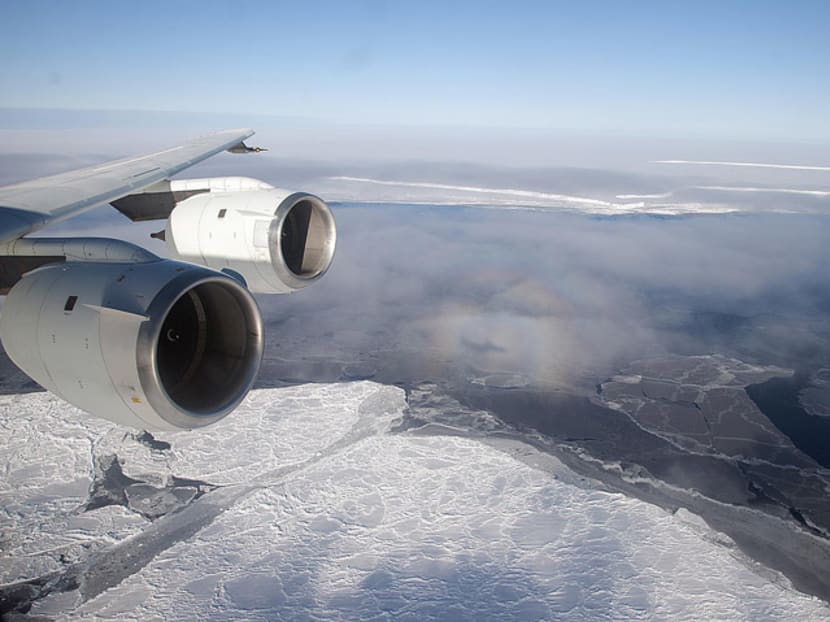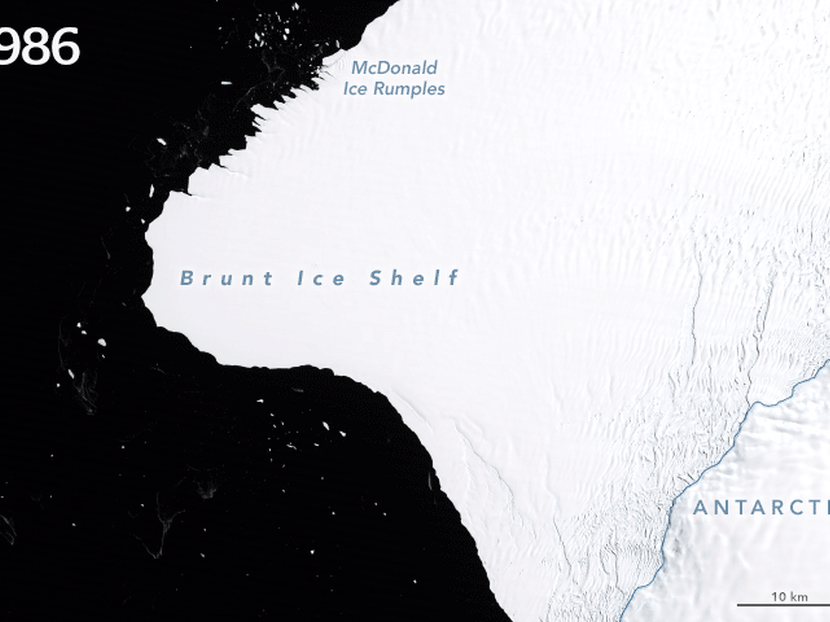Explainer: What does a giant dislodged iceberg mean for us in Singapore?
SINGAPORE — An iceberg roughly two-and-a-half times the size of Singapore could break away from a western Antarctic ice shelf in weeks, said the United States’ National Aeronautics and Space Administration (NASA) last month.

The Brunt Ice Shelf. There is “no one reason” that can explain the calving at Antarctica’s Brunt Ice Shelf, said Professor Benjamin Horton of Nanyang Technological University’s Asian School of the Environment.
SINGAPORE — An iceberg roughly two-and-a-half times the size of Singapore could break away from a western Antarctic ice shelf in weeks, said the United States’ National Aeronautics and Space Administration (NASA) last month.
It is the result of a rift, known as a Halloween crack, intersecting with another fissure which was stable for the past 35 years but which recently started accelerating northwards.
The two rifts are set to meet in a few weeks, experts estimate, which will lead to the iceberg calving, or being dislodged.
There is “no one reason” that can explain the calving at Antarctica’s Brunt Ice Shelf, said Professor Benjamin Horton of Nanyang Technological University’s Asian School of the Environment.
Ice is melting everywhere, although the western Antarctic is the most sensitive and the fastest melting region, he said.

How the cracks have grown from Jan 30, 1986, to Jan 23, 2019.
The release of the iceberg alone will not lead to a significant increase in sea level, said Prof Horton. But the loss of these ice shelves will open the floodgates to land-based ice entering the ocean, which can contribute significantly to a rise in sea levels, he said.
When land-based ice such as mountain glaciers and ice sheets covering Antarctica and Greenland melt, it is akin to adding more water into an already-full glass.
“Singapore may feel immune to the (effects) of climate change; we don’t really experience forest fires or feel the rise in heat,” Professor Horton said. “But the rising sea level is a big problem for us.”
Much of Singapore lies only 15m above the mean sea level, and about 30 per cent of the island is less than 5m above the mean sea level.
NASA researchers have previously said that if the western Antarctic ice sheet melts fully, sea levels could rise as much as 3m.
“This could displace homes and lead to a loss of economic prosperities,” added Prof Horton.
In a post on its Earth Observatory page last month on part of the Brunt Ice Shelf breaking off, NASA said calving is a normal part of the life cycle of ice shelves, but recent changes were unfamiliar in the area.
While not a “terribly large iceberg by Antarctic standards”, it may be the largest iceberg to break from the Brunt Ice Shelf since observations began in 1915.
The cracks have sparked safety concerns for people working on the shelf, especially researchers at the British Antarctic Survey’s Halley Station, NASA said.
WHAT HAVE WE DONE?
Over 70 per cent of Singapore’s coastline is protected with hard structures such as seawalls and rock slopes
In 2011, the minimum land reclamation level was raised from 3m to 4m above the mean sea level.
From this year, Carbon Pricing Act will apply to 30 to 40 large carbon emitters — defined as those that produce 25,000 or more tonnes of greenhouse gases annually. They will pay S$5 for each tonne of greenhouse gases emitted until 2023. The tax could eventually be increased to between S$10 and S$15 by 2030.
Among other things, Singaporeans can do their part to slow the rise in sea levels by reducing their energy consumption, taking public transport and eating less meat, according to a blog post last year by the Earth Observatory of Singapore.









